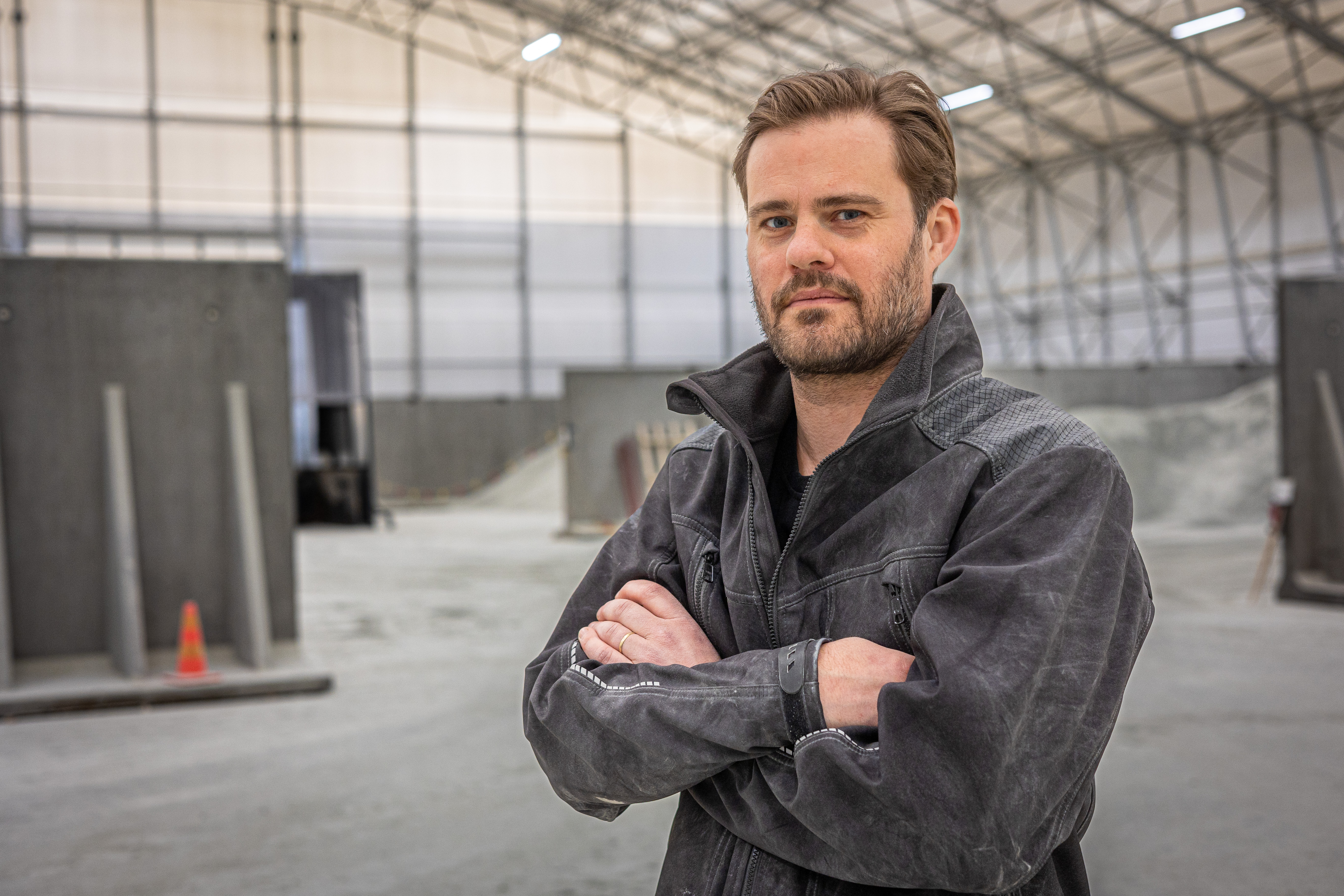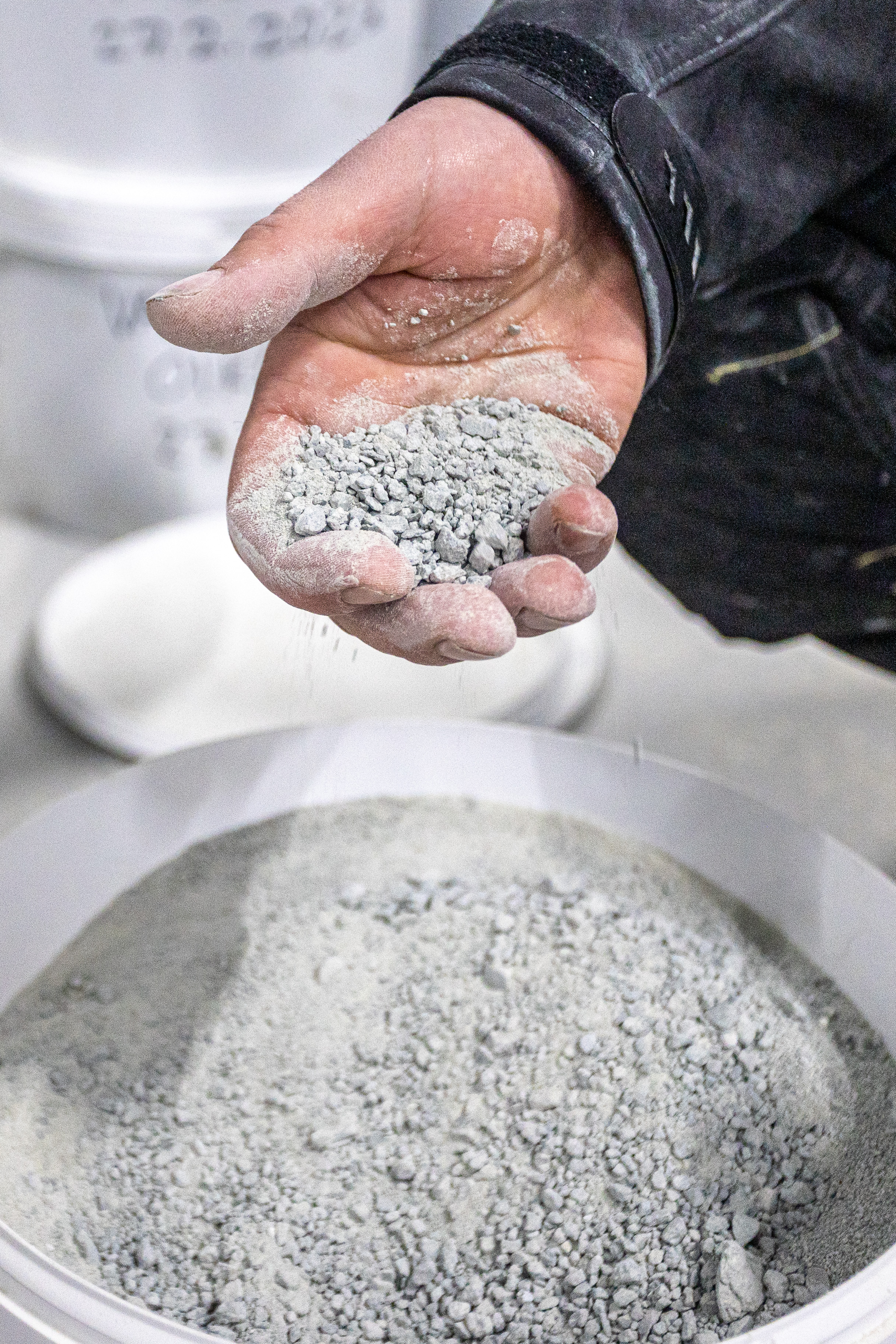Posiva's tunnel backfill material production plant all ready for operation
Posiva's project for final disposal of spent nuclear fuel is progressing on several fronts, not only in Olkiluoto. A subcontractor of Posiva, Lux Mineral Services (LMS), has built in Western Finland a production plant for the backfill material to be used in Posiva's deposition tunnels, also referred to as granular backfill.

Quality Manager Pontus Nybergh can honestly say that he has his hands full of clay. The clay backfill production plant is a tall industrial facility 5,500 square metres in size, or the size of a football field.
The "clay plant" is located in an industrial estate, safely among other industries. The plant will process the bentonite clay needed in the final deposition. First time clay will be used in the Trial Run of Final Disposal (TRFD) which Posiva will conduct in 2024.
The purpose of TRFD to be carried out in the Onkalo® facility in Olkiluoto is to test the complete final disposal process starting with the encapsulation of the spent nuclear fuel through to the emplacing of the canisters in the deposition hole and up to the backfilling and closing of the tunnel. However, the short trial tunnel only comprises four holes and instead of real spent nuclear fuel, dummy elements will be packed in the canisters.
Facility in the size of a football field
The production plant is a tall industrial facility of about 5,500 square metres, or the size of a football field, realised as a building of lightweight construction that shelters the clay material. In the 160 square metre process room in the centre of the facility, the pouring density of the bentonite clay delivered by sea is increased to ensure an adequately high tunnel sealing capacity. In practice, the density of raw clay is modified by subjecting it to heavy compression before it is crushed.
- A large plant is needed because the bentonite clay is delivered here in batches of 540 tons at a time, and unloaded from the trucks into four compartments inside the facility, explains Quality Manager Pontus Nybergh from LMS.
Two compartments have already been completed. One more compartment, considerably larger than these first two will still be built at the other end of the plant. The plan is to have all of the clay backfill needed for one deposition tunnel with ca. 35-40 deposition holes (about 7,000 tons of clay) available when the tunnel backfill process begins.
The final disposal of spent nuclear fuel by Posiva is scheduled to start in mid-2020s. The exact start date has not yet been set. For LMS, the busiest production period of clay backfill will probably occur in the spring and summer of 2025.

Absorbs and retains moisture
Bentonite clay is an important part of safe final disposal. Unlike normal clay, volcanic clay not only absorbs moisture but also retains it. Bentonite also acts as an elastic intermediate material between the canister and the bedrock.
Bentonite clay is readily available all over the world. It is used in construction to improve soil properties and to prevent and divert the flow of water. A typical application of bentonite is under landfills. Clumping cat litter is also bentonite clay.
Share